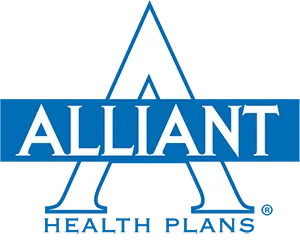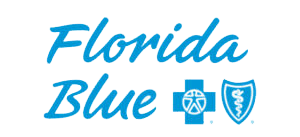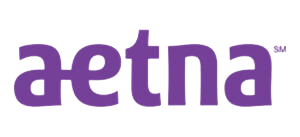Marijuana Addiction Treatment Center in Rome, GA
Marijuana Addiction Treatment Center in Rome, GA

Marijuana use has become more common in recent years. However, many people are unaware of its potential for addiction. This has led to an increased need for a reputable marijuana addiction treatment center in Rome, GA, such as Fairland Recovery Center.
While not everyone who uses marijuana will become addicted, some individuals can develop a dependence on the drug. This condition is known as cannabis use disorder.
About 3 in 10 people who use marijuana have cannabis use disorder. This means they may experience difficulty controlling their use, spend a lot of time using the drug, and continue using it despite negative consequences. People who start using marijuana at a young age or have a family history of addiction are at higher risk of developing this disorder.
Signs of marijuana addiction can include cravings, withdrawal symptoms when not using, and neglecting responsibilities due to marijuana use. If someone finds they need marijuana to feel normal or experiences problems in their daily life due to their use, they may want to consider seeking help.
Treatment options are available for those struggling with marijuana addiction.
Understanding Marijuana
Marijuana comes from the cannabis plant, mainly Cannabis sativa. It contains over 100 chemical compounds called cannabinoids. The main psychoactive ingredient is THC.
People consume marijuana in different ways:
- Smoking joints or blunts
- Using pipes or bongs
- Eating edibles
- Vaping oils
THC affects the brain’s endocannabinoid system. This system plays a role in mood, memory, and appetite. When someone uses marijuana, it can cause:
- Relaxation
- Altered senses
- Changes in mood
- Impaired memory
Not all cannabis has high THC. Hemp is a variety with very low THC levels. It’s often grown for CBD, a non-psychoactive cannabinoid.
Marijuana goes by many names. Common slang terms include weed, pot, grass, ganja, and Mary Jane. The dried flowers are called buds.
While some use marijuana for medical reasons, recreational use carries risks. Regular use can lead to tolerance and dependence. About 1 in 10 marijuana users may develop an addiction.
The potency of marijuana has increased over time. Today’s strains often contain higher THC levels than in the past. This may increase the risk of negative effects.
Health Implications of Marijuana Use
Marijuana use can affect both physical and mental health. It impacts brain function, pregnancy outcomes, and poses unique risks for young people. These effects can be both short-term and long-lasting.
Physical Health Consequences
Marijuana smoke contains many of the same toxins as tobacco smoke. This can lead to lung problems like bronchitis and increased risk of respiratory infections. Regular use may also affect heart health, raising the risk of heart attacks and strokes.
Marijuana can cause rapid heartbeat and increased blood pressure. Some users experience decreased appetite and weight loss. Others might have the opposite effect, leading to weight gain.
Long-term use may impact fertility in both men and women. It can lower sperm count and make it harder to get pregnant.
Mental Health and Cognitive Function
Marijuana use can affect mental health in various ways. It may increase the risk of anxiety, depression, and other mood disorders. Some users experience paranoia or psychosis, especially with high-potency products.
Regular use can impact cognitive function. It may affect memory, learning, and attention span. These effects can last even after the high wears off.
Marijuana use can also lead to addiction. About 1 in 10 users become addicted, with the risk higher for those who start young.
Long-term use might alter brain structure, especially in areas related to memory and emotion.
Marijuana Use During Pregnancy
Using marijuana while pregnant can harm the baby. It may lead to lower birth weight and an increased risk of premature birth.
The drug can cross the placenta and affect fetal brain development. This might lead to problems with attention, memory, and problem-solving later in life.
There’s also a higher risk of stillbirth with marijuana use during pregnancy. Babies exposed to marijuana may have trouble with sleep patterns and maybe more irritable.
Adolescence and Youth Usage
Young people are especially vulnerable to the negative effects of marijuana. The drug can interfere with brain development, which continues until the mid-20s.
Regular use in teens is linked to lower IQ scores and poorer school performance. It may also increase the risk of mental health issues like schizophrenia.
Youth who use marijuana are more likely to engage in risky behaviors. This includes trying other drugs or driving while under the influence.
Starting marijuana use early increases the risk of addiction. It can also lead to problems with memory and learning that persist into adulthood.
Identifying Marijuana Addiction
Marijuana addiction can be recognized through specific signs, diagnostic criteria, and withdrawal symptoms. Knowing these indicators helps people spot potential problems early.
Signs and Symptoms of Addiction
People with marijuana addiction often show changes in behavior and health. They may use more marijuana than planned or have trouble cutting back. Some lose interest in activities they once enjoyed.
Users might spend a lot of time getting, using, or recovering from marijuana. They may keep using despite problems at work, school, or home. Relationship issues can also arise.
Physical signs include red eyes, increased appetite, and slowed reactions. Memory and focus problems are common. Some people experience anxiety or paranoia.
Marijuana Use Disorder Diagnosis Criteria
Doctors use specific guidelines to diagnose marijuana use disorder. These come from the DSM-5, a manual for mental health conditions.
Key criteria include:
- Using more marijuana than intended
- Failed attempts to quit or cut down
- Cravings for marijuana
- Neglecting responsibilities due to use
- Continued use despite social or health problems
- Giving up important activities for marijuana
- Using in dangerous situations
A person must meet at least two criteria for diagnosis. More criteria met indicate a more severe disorder.
Cannabis Withdrawal Syndrome
When heavy marijuana users stop, they may experience withdrawal symptoms. This is called Cannabis Withdrawal Syndrome.
Common symptoms include:
- Irritability and anger
- Anxiety or nervousness
- Sleep problems
- Decreased appetite
- Restlessness
- Depressed mood
Physical symptoms can also occur. These may include headaches, sweating, and stomach pain. Cravings for marijuana are often strong during withdrawal.
Symptoms usually start within 24 hours of quitting. They peak in the first week and can last up to two weeks. While not dangerous, withdrawal can be uncomfortable and lead to relapse.
Our Approach to Marijuana Addiction Treatment
Treating marijuana addiction involves different methods. These include therapy, medication, and support groups. Each approach aims to help people stop using marijuana and stay drug-free.
Behavioral Therapies
Cognitive Behavioral Therapy (CBT) is a key treatment for marijuana addiction. It helps people change negative thoughts and behaviors linked to drug use. CBT teaches coping skills to avoid relapse.
Motivational Enhancement Therapy encourages people to commit to quitting. It helps resolve doubts about stopping marijuana use.
Contingency Management uses rewards to reinforce positive behaviors. People earn points or vouchers for staying drug-free. These can be exchanged for healthy activities or goods.
Pharmacological Treatments
No FDA-approved medications exist specifically for marijuana addiction. However, some drugs may help with withdrawal symptoms.
Medications can treat sleep problems, anxiety, or depression that occur when quitting. These issues often lead to relapse if not addressed.
Cannabidiol (CBD), a non-psychoactive part of marijuana, is being studied as a possible treatment. It may help reduce cravings and anxiety.
Support Groups and Community Services
Marijuana Anonymous offers 12-step programs for people trying to quit. These groups provide peer support and guidance.
Community health centers often offer addiction services. They may provide counseling, education, and referrals to other resources.
The Substance Abuse and Mental Health Services Administration has a helpline. It connects people to local treatment options.
Online forums and apps can offer additional support. They allow people to track their progress and connect with others facing similar challenges.
Prevention and Education
Preventing marijuana addiction involves a multi-faceted approach targeting youth and the community. Effective strategies include raising awareness, strengthening family bonds, and implementing smart policies.
Public Awareness Campaigns
Public awareness campaigns play a key role in educating people about marijuana risks. These campaigns use various media to reach different age groups.
TV ads, social media posts, and school programs spread accurate info about cannabis use disorder. They highlight how marijuana can affect brain development in teens.
Campaigns often focus on busting myths about marijuana being harmless. They explain how regular use can lead to addiction and mental health issues.
Family and Community-Based Interventions
Family support is crucial in preventing youth marijuana use. Parents who talk openly with kids about drugs can reduce the chance of addiction.
School-based programs teach students about the dangers of marijuana. These lessons cover topics like peer pressure and decision-making skills.
Community centers offer after-school activities to keep youth engaged.
Sports, arts, and volunteer work provide positive alternatives to drug use.
Local support groups help families dealing with addiction. They offer guidance and resources to create drug-free home environments.
Policy and Regulation
Smart laws and rules help limit access to marijuana, especially for young people. Age restrictions on buying and using marijuana are common in many places.
Zoning laws control where marijuana can be sold. Keeping shops away from schools and parks makes it harder for youth to get marijuana.
Some areas use taxes on marijuana sales to fund prevention and treatment programs. This money helps create more resources for those struggling with addiction.
Clear packaging rules ensure products have warning labels. These labels inform users about health risks and addiction potential.
Find Freedom from Marijuana Addiction
At Fairland Recovery Center, we understand that addiction can feel overwhelming, but you don’t have to face it alone. Our compassionate team is dedicated to providing personalized treatment plans that empower you on your journey to recovery.
Take the first step toward a healthier, happier life. Contact us today to learn more about our comprehensive marijuana addiction treatment programs.
Fairland Recovery Center Treatments
Find Help Now
We accept most major insurances











